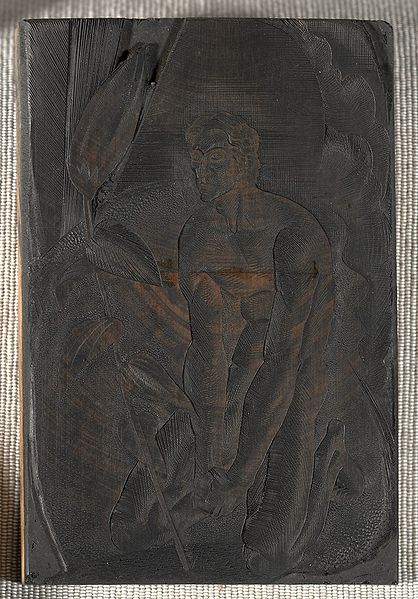Passionate Journey, or My Book of Hours, is a wordless novel of 1919 by Flemish artist Frans Masereel. The story is told in 167 captionless prints, and is the longest and best-selling of the wordless novels Masereel made. It tells of the experiences of an early 20th-century everyman in a modern city.
The protagonist arrives at the city by train.
Masereel depicts himself (left) dressed in the same manner as the book's protagonist (center, right).
The protagonist finishes with a posthumous walk in the cosmos.
The 149th image, which was cut from some editions
The wordless novel is a narrative genre that uses sequences of captionless pictures to tell a story. As artists have often made such books using woodcut and other relief printing techniques, the terms woodcut novel or novel in woodcuts are also used. The genre flourished primarily in the 1920s and 1930s and was most popular in Germany.
Wordless novels flourished in Germany in the 1920s and typically were made using woodcut or similar techniques in an Expressionist style. (Frans Masereel, 25 Images of a Man's Passion, 1918)
Expressionist film and graphics inspired early wordless novels. (The Cabinet of Dr. Caligari, 1920)
Wordless novelists favoured relief printing such as in this wood engraving from Ward's Prelude to a Million Years (1933).
In He Done Her Wrong (1930), Milt Gross parodied Lynd Ward's Gods' Man (1929).








